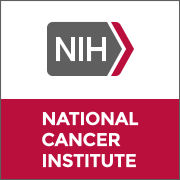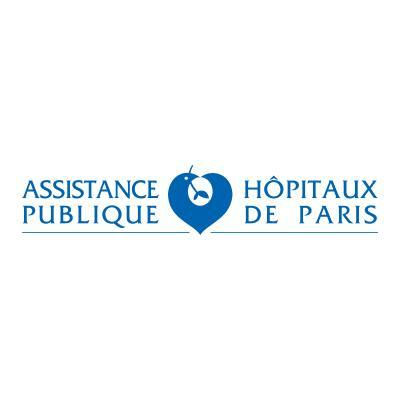Request Demo
Last update 08 May 2025
Ganglioneuroblastoma
Last update 08 May 2025
Basic Info
Synonyms Ganglioneuroblastoma, Ganglioneuroblastoma (disorder), Ganglioneuroblastoma (morphologic abnormality) + [13] |
Introduction A moderately malignant neoplasm composed of primitive neuroectodermal cells dispersed in myxomatous or fibrous stroma intermixed with mature ganglion cells. It may undergo transformation into a neuroblastoma. It arises from the sympathetic trunk or less frequently from the adrenal medulla, cerebral cortex, and other locations. Cervical ganglioneuroblastomas may be associated with HORNER SYNDROME and the tumor may occasionally secrete vasoactive intestinal peptide, resulting in chronic diarrhea. |
Related
7
Drugs associated with GanglioneuroblastomaTarget |
Mechanism GD2 inhibitors [+2] |
Active Org. |
Originator Org. |
Active Indication |
Inactive Indication |
Drug Highest PhaseApproved |
First Approval Ctry. / Loc. United States |
First Approval Date10 Mar 2015 |
Target |
Mechanism DNA inhibitors |
Active Org. |
Originator Org. |
Active Indication |
Inactive Indication |
Drug Highest PhaseApproved |
First Approval Ctry. / Loc. United States |
First Approval Date16 Nov 1959 |
18
Clinical Trials associated with GanglioneuroblastomaNCT06858501
Concordance in Response Assessment Incorporating Meta-Iodobenzylguanidine (123I-MIBG) and Meta-[18F]Fluorobenzylguanidine (18F-MFBG, IND#146379, NSC#853868) Imaging in Neuroblastoma
This phase II trial evaluates whether an investigational scan (18F-MFBG positron emission tomography [PET]/computed tomography [CT] or PET/magnetic resonance imaging [MRI]) can accurately detect tumors in patients with newly diagnosed, high-risk neuroblastoma as well as standard of care imaging with 123 I-MIBG. 18F-MFBG is a radioactive diagnostic agent that is injected into a vein and taken up by tumor cells. The cells can then be visualized using PET/CT or PET/MRI scans. A PET scan uses radioactive material injected into the blood to show the internal workings of the body. A CT scan uses x-rays and a computer to produce a 3-dimensional image of the body. MRI uses radiofrequency waves and a strong magnetic field rather than x-rays to provide clear and detailed pictures of internal organs and tissues. Combining PET with CT or MRI may help doctors better understand the extent and the exact location of disease. Diagnostic procedures, such as 18F-MFBG PET/CT or PET/MRI, may detect tumors as well as or better than the current standard imaging with 123 I-MIBG in patients with newly diagnosed, high-risk neuroblastoma.
Start Date20 Jun 2025 |
Sponsor / Collaborator |
NCT06798532
Interest of Preoperative Arteriography to Identify the Adamkiewicz Artery Before Surgery for Basi-thoracic Neuroblastic Tumors
Neuroblastic tumors (NBTs) develop from neural crest cells that give rise to the sympathetic nervous system. They include neuroblastomas, ganglioneuroblastomas, and ganglioneuromas. They represent approximately 10% of solid tumors in children under 15 years of age. In 15 to 20% of cases, NBTs are located in the thoracic region. These paravertebral tumors have an extracanal component and some also have an intraspinal component (dumbbell tumors) that can cause spinal cord compression. Surgery for these tumors also exposes the patient to neurological complications. In the thorax, the basi-thoracic location (T9-T12) may be particularly at risk due to the presence of the artery of Adamkiewicz (AKA), which supplies blood to the spinal cord; damage to this artery can result in spinal cord ischemia. To avoid this scenario, some teams recommend performing spinal cord arteriography to identify AKA. However, many centers do not perform arteriography and do not report more postoperative complications.
Currently, there is no consensus on the indications for performing preoperative spinal arteriography in patients undergoing surgery for basi-thoracic NBT.
This study evaluates the practice in France of preoperative arteriography to identify the AKA among patients undergoing surgery for basi-thoracic neuroblastic tumors and analyzes the incidence of postoperative neurological complications in these patients.
Currently, there is no consensus on the indications for performing preoperative spinal arteriography in patients undergoing surgery for basi-thoracic NBT.
This study evaluates the practice in France of preoperative arteriography to identify the AKA among patients undergoing surgery for basi-thoracic neuroblastic tumors and analyzes the incidence of postoperative neurological complications in these patients.
Start Date01 Mar 2025 |
Sponsor / Collaborator |
NCT06450041
Phase II Study of Ex-Vivo Expanded Allogeneic Universal Donor TGFβi NK Cell Infusions in Combination With Temozolomide, Irinotecan, Dinutuximab, and Sargramostim in Patients With Relapsed or Refractory Neuroblastoma The STING (Sequential Temozolomide, Irinotecan, NK Cells and GD2 mAb) Trial
This is a phase II study looking at patient response to treatment with the combination dinutuximab, temozolomide, irinotecan, and GM-CSF.
Start Date16 Dec 2024 |
Sponsor / Collaborator |
100 Clinical Results associated with Ganglioneuroblastoma
Login to view more data
100 Translational Medicine associated with Ganglioneuroblastoma
Login to view more data
0 Patents (Medical) associated with Ganglioneuroblastoma
Login to view more data
1,010
Literatures (Medical) associated with Ganglioneuroblastoma01 May 2025·Clinical Radiology
Radiomics analysis based on 18F-fluorodeoxyglucose positron emission tomography/computed tomography for differentiating the histological classification of peripheral neuroblastic tumours
Article
Author: Yang, J ; Feng, L ; Zhang, H ; Yao, X ; Wang, W ; Wang, C
24 Mar 2025·Journal of Neurosurgery: Case Lessons
Stereotactic radiosurgery for brain metastases secondary to adrenal ganglioneuroblastoma: illustrative case
Article
Author: Harary, Paul M. ; Cardona, Juan J. ; Tayag, Armine ; Chang, Steven D. ; Park, David J. ; Hori, Yusuke S. ; Ustrzynski, Louisa ; Persad, Amit R. L. ; Emrich, Sara C.
01 Feb 2025·Journal of Surgical Research
A Single-Institution Analysis of Surveillance Practice for Low-Risk Neuroblastic Tumors
Article
Author: Shah, Nilay ; Schwartz, Dana ; Mallampalli, Grace ; Bricker, Josh ; Mansfield, Sara A ; Streby, Keri ; Srivatsa, Shachi ; English, Jennifer ; Cole, Lindsay ; Aldrink, Jennifer H ; Nicol, Kathleen ; Ranalli, Mark
Analysis
Perform a panoramic analysis of this field.
login
or

AI Agents Built for Biopharma Breakthroughs
Accelerate discovery. Empower decisions. Transform outcomes.
Get started for free today!
Accelerate Strategic R&D decision making with Synapse, PatSnap’s AI-powered Connected Innovation Intelligence Platform Built for Life Sciences Professionals.
Start your data trial now!
Synapse data is also accessible to external entities via APIs or data packages. Empower better decisions with the latest in pharmaceutical intelligence.
Bio
Bio Sequences Search & Analysis
Sign up for free
Chemical
Chemical Structures Search & Analysis
Sign up for free






